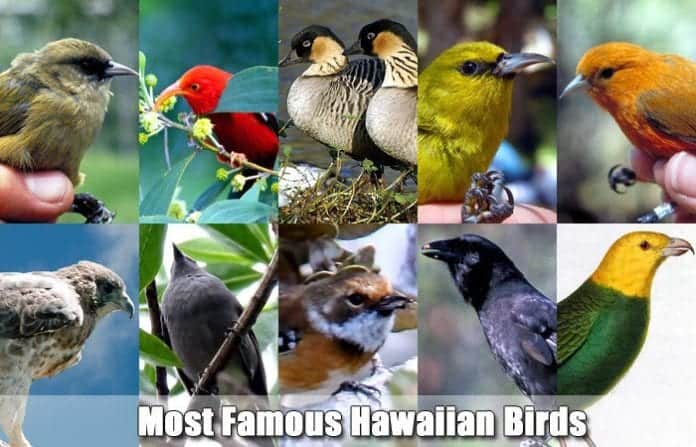
Hawaiian Birds: Recently we had explored the most colorful birds and their interesting details. In this page, we’ll explore the famous Hawaiian Birds.
Situated in the middle of the Pacific Ocean, the islands of Hawaii exhibit a vast diversity of flora and fauna. Despite its geographical location and a relatively “young” geology, Hawaii is home to various unique animals such as birds. We’ve searched the islands and found 11 of the most famous.
Table of Contents
List of Famous Hawaiian Birds
Welcome to the avian biodiversity of Hawaii!
1. Hawaii Creeper
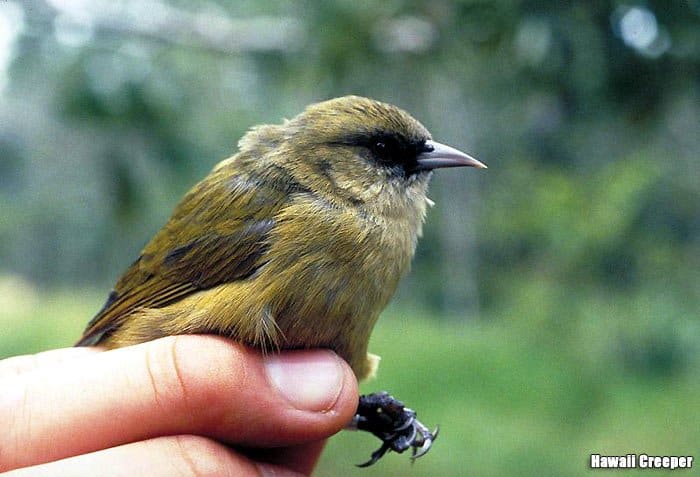
| Order | Family | Genus | Species |
|---|---|---|---|
| Passeriformes | Fringillidae | Loxops | Loxops mana |
 The Hawaii creeper[1], a bird endemic to the Big Island of Hawaii, is characterized by having an olive green overall plumage, white throat, and dark gray mask. As their name suggests, the Hawaii creeper can climb trees like any other creepers.
The Hawaii creeper[1], a bird endemic to the Big Island of Hawaii, is characterized by having an olive green overall plumage, white throat, and dark gray mask. As their name suggests, the Hawaii creeper can climb trees like any other creepers.
- This Hawaiian bird, characterized by its short yet sharp beak, can dig deeper into the bark of trees to pick the insects underneath.
- Besides insects, its diet includes nectar from native plants like koa and ʻōhiʻa lehua.
- In 1975, the Hawaii Creeper was put into the list of endangered bird species in Hawaii. However, scientists are still unsure whether these Hawaiian birds are just endangered or very uncommon.
2. ‘I’iwi
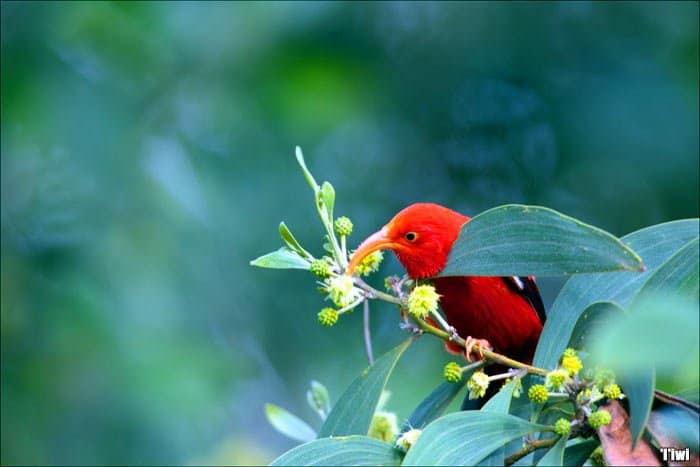
| Order | Family | Genus | Species |
|---|---|---|---|
| Passeriformes | Fringillidae | Drepanis | Drepanis coccinea |
 Also known as the scarlet honeycreeper, the ‘i’iwi[2] is a species of hummingbird-niched creeper endemic to Hawaii. This Hawaiian bird is very famous and is even considered one recognizable symbol of the state.
Also known as the scarlet honeycreeper, the ‘i’iwi[2] is a species of hummingbird-niched creeper endemic to Hawaii. This Hawaiian bird is very famous and is even considered one recognizable symbol of the state.
- In terms of physical appearance, the I’iwi has a scarlet overall plumage, black wings, and a long, curved pink beak.
- Currently, ‘i’iwis have a total remaining population of 350,000, continuously decreasing.
3. ‘Akiapola‘au
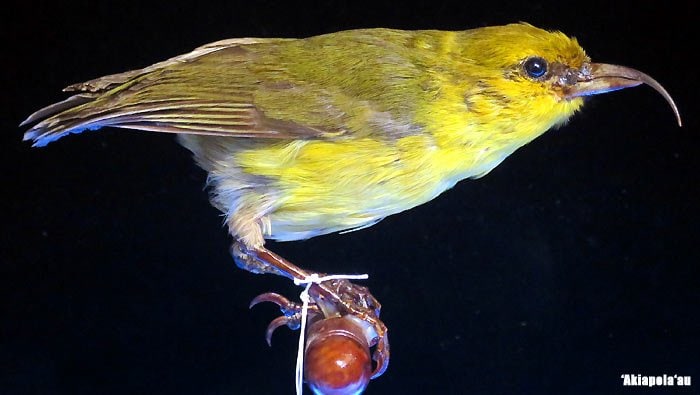
| Order | Family | Genus | Species |
|---|---|---|---|
| Passeriformes | Fringillidae | Hemignathus | Hemignathus wilsoni |
 The next bird in this list is the ‘Akiapola‘au[3], the only bird species in Hawaii that occupies the woodpecker niche. These Hawaiian birds are included in the community’s population of birds that control insects.
The next bird in this list is the ‘Akiapola‘au[3], the only bird species in Hawaii that occupies the woodpecker niche. These Hawaiian birds are included in the community’s population of birds that control insects.
- The ‘Akiapola‘au can often be seen in dry habitats but also in moist forests.
- This bird is characterized by having a slightly fat body with white bottoms and tail. This bird also has a yellow-colored chest, orange head, black face and beak, and grayish wings.
4. Nene Goose (Hawaii’s State Bird)
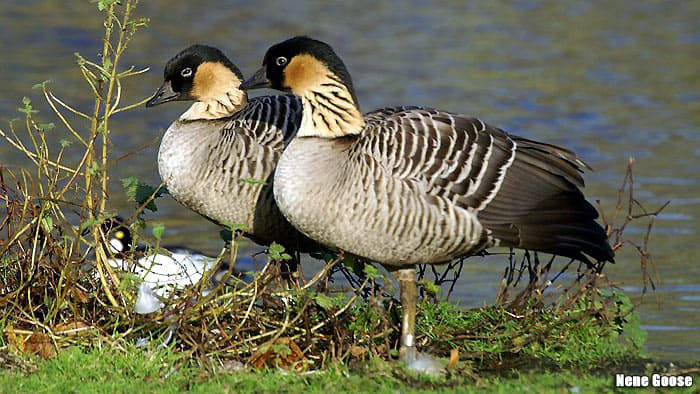
| Order | Family | Genus | Species |
|---|---|---|---|
| Anseriformes | Anatidae | Branta | Branta sandvicensis |
 Commonly found in habitats like grasslands, scrub-land, and lowlands, the Nene goose is considered to be the Hawii’s State bird. Basically, this bird feeds on grasses, herbs, flowers, and other plants.
Commonly found in habitats like grasslands, scrub-land, and lowlands, the Nene goose is considered to be the Hawii’s State bird. Basically, this bird feeds on grasses, herbs, flowers, and other plants.
- Unlike most ducks, Nenes are capable of flying, with some capable of flying to get food.
- Nene goose[4] exhibit slight sexual dimorphism: males have black heads, necks, beaks, feet, and legs, whereas females are smaller but have the same coloration.
- It is believed that the Nene came from the Canada goose, Branta canadensis that arrived in the islands over 500,000 years ago. As a result, Nene geese appear to be somewhat like the Canada geese.
5. Hawaii ‘amakihi
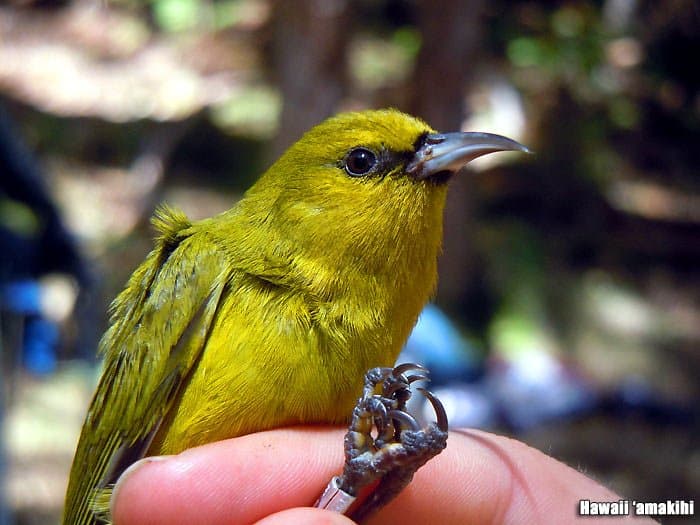
| Order | Family | Genus | Species |
|---|---|---|---|
| Passeriformes | Fringillidae | Chlorodrepanis | Chlorodrepanis virens |
 The Hawaiʻi ʻamakihi[5], one of the most common honey-creepers in the islands, is quite a small bird (only about 10 centimeters long) with yellow-green overall plumage and black bill. It is also characterized by having brown eyes yet black pupils.
The Hawaiʻi ʻamakihi[5], one of the most common honey-creepers in the islands, is quite a small bird (only about 10 centimeters long) with yellow-green overall plumage and black bill. It is also characterized by having brown eyes yet black pupils.
- This species has a very powerful voice despite its tiny size. It is believed that its chirps like “aki, ki, ki, a” can be heard even miles away.
- Unlike other Hawaiian birds, this bird has a wide food preference. Most of the time, it consumes insects and spiders among the bark of trees and shrubs. However, it also drinks nectar from flowers and fruits, of course, with its tubular tongue.
- The ‘amakihi exhibits a lot of resemblance to the Japanese White-eye and the Maui ‘Alauahio.
6. ‘akepa
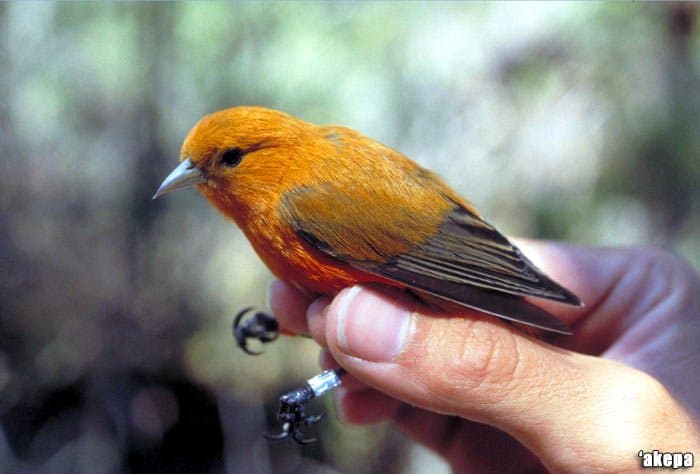
| Order | Family | Genus | Species |
|---|---|---|---|
| Passeriformes | Fringillidae | Loxops | Loxops sp. |
 This species of bird is one of the smallest honey-creeper bird found in Hawaii, with only four inches in height and about 10 grams in weight. Interestingly, the ‘akepa[6] has a unique cross-bill that, when closed, the upper portion overlaps with the lower portion only at a side.
This species of bird is one of the smallest honey-creeper bird found in Hawaii, with only four inches in height and about 10 grams in weight. Interestingly, the ‘akepa[6] has a unique cross-bill that, when closed, the upper portion overlaps with the lower portion only at a side.
- This bird also exhibits sexual dimorphism: male ‘akepas have an overall bright red-orange plumage, whereas females have a greenish upper body and a yellow belly.
- ‘akepas are considered insectivores as their diet includes insects and spiders.
- The ‘amakihi exhibits a lot of resemblance to the Japanese White-eye and the Maui ‘Alauahio.
7. ‘i‘o
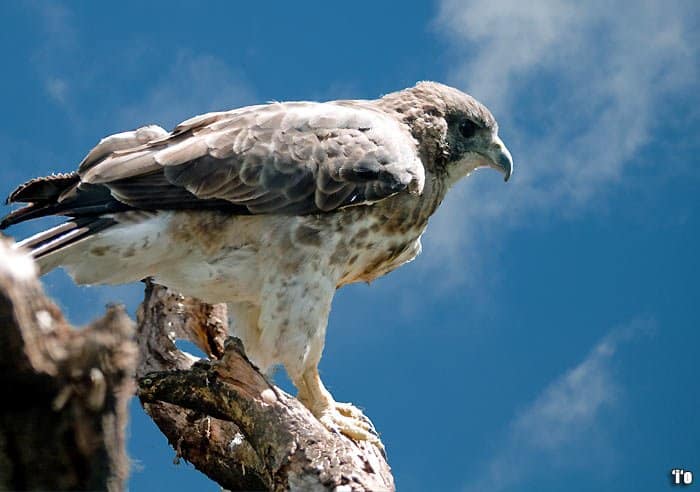
| Order | Family | Genus | Species |
|---|---|---|---|
| Falconiformes | Accipitridae | Buteo | Buteo solitarius |
 Also known as the Hawaiian hawk[7], the ‘i’o is a predatory bird that is restricted to the Big Island of Hawaii and the only hawk species that is endemic to the place.
Also known as the Hawaiian hawk[7], the ‘i’o is a predatory bird that is restricted to the Big Island of Hawaii and the only hawk species that is endemic to the place.
- Regarding physical appearance, the ‘i’o are easily recognizable due to their bulky bodies and length.
- Interestingly, female birds of this species are far larger than males, with an average body weight of 605 grams, while the latter weighs 441 grams. During the breeding season, the females develop a distinct yellow fore cap above their upper beak.
- Species of this bird usually have double color phases: one is a dark phase (overall brown body) and a lighter phase (lighter breast and underwings).
8. Hawaiian Thursh – ‘oma‘o
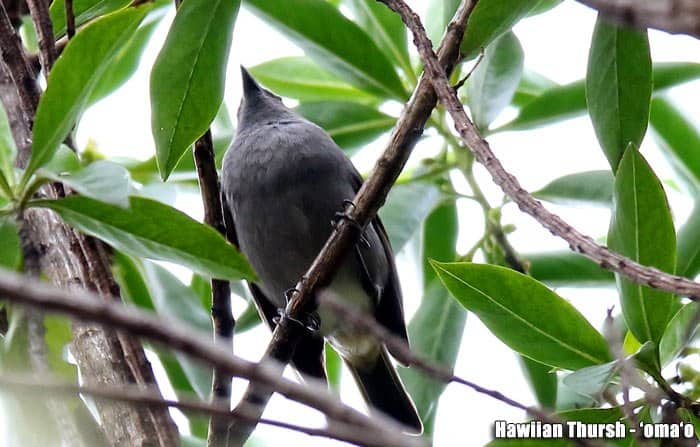
| Order | Family | Genus | Species |
|---|---|---|---|
| Passeriformes | Turdidae | Myadestes | Myadestes obscurus |
 Also referred to as the Hawaiian thrush, the ‘oma’o is a robin-like type of bird that is restricted only to the rain-forests of the eastern and western parts of the Big Island in Hawaii.
Also referred to as the Hawaiian thrush, the ‘oma’o is a robin-like type of bird that is restricted only to the rain-forests of the eastern and western parts of the Big Island in Hawaii.
- In terms of physical appearance, this bird species is characterized by having a grey-brown head, olive-brown upper plumage, and greyish-white body underneath.
- Because of their sometimes unrecognizable dull physical appearance, these Hawaiian birds are often detected by their voice, which is usually pleasant and has jerky melodies.
- Hawaiian thrushes[8] are already considered to be vulnerable and are close to extinction.
9. ʻŌʻū

| Order | Family | Genus | Species |
|---|---|---|---|
| Passeriformes | Fringillidae | Psittirostra | Psittirostra psittacea |
 The next Hawaiian bird on this list is the ‘o’u[9], a large forest bird that is 7 inches long. Its diet include a wide range of food as it can feed on insects, fruits, and the buds and flowers of the plant ‘ōhi‘a.
The next Hawaiian bird on this list is the ‘o’u[9], a large forest bird that is 7 inches long. Its diet include a wide range of food as it can feed on insects, fruits, and the buds and flowers of the plant ‘ōhi‘a.
- This bird species has sexual dimorphism wherein male birds are usually colorful with bright yellow heads, dark green upperparts, and olive green underparts, whereas females are dull with olive-green heads.
- Another interesting fact about this bird is that it has a pink finch-like beak and legs.
- Another distinguishing feature of this Hawaiian bird is its ascending-descending whistle that may rapidly shift into a sweet canary-like melodic song.
10. ‘alala
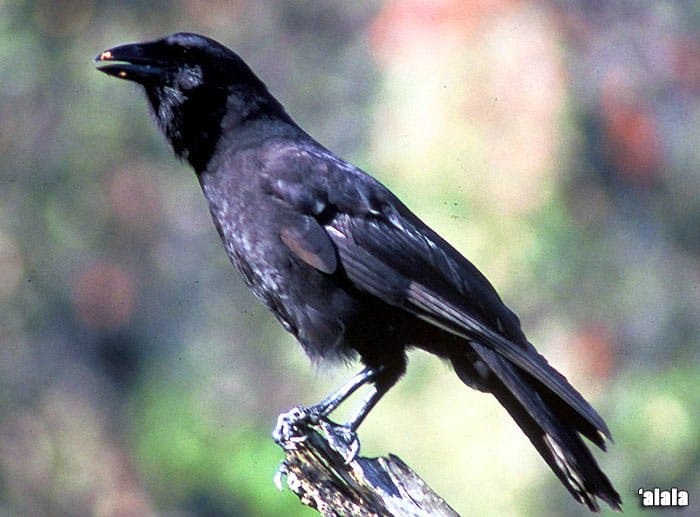
| Order | Family | Genus | Species |
|---|---|---|---|
| Passeriformes | Coryidae | Coryus | Coryus hawaiiensis |
 Also known as the Hawaiian crow[10], the ‘alala is a medium-sized bird that measures 18-20 inches long. This omnivorous (feeds on fruits, insects, mice, and even small birds) is endemic to the Big island of Hawaii.
Also known as the Hawaiian crow[10], the ‘alala is a medium-sized bird that measures 18-20 inches long. This omnivorous (feeds on fruits, insects, mice, and even small birds) is endemic to the Big island of Hawaii.
- Compared to its North American relatives, the ‘alala is darker with brown-colored wings and stiff throat feathers with grayish tinges.
- The ‘alala also vocalizes various calls that range from simple crow-like calls to more musical ones.
- This bird species is a natural prey to the previously discussed ‘i’o (Hawaiian hawk”. Aside from that, young ‘alalas are very vulnerable to tree-climbing rats, dogs, and mongooses.
11. ‘elepaio
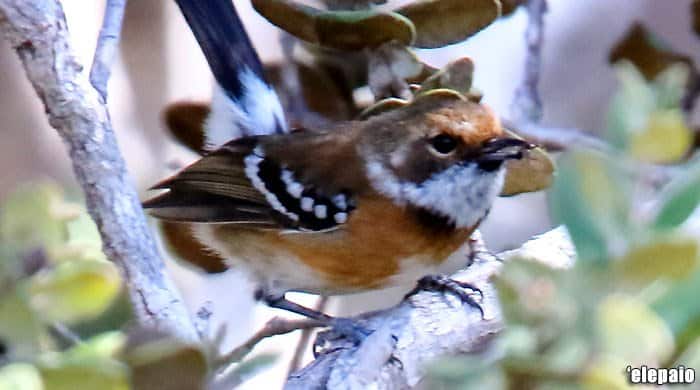
| Order | Family | Genus | Species |
|---|---|---|---|
| Passeriformes | Monarchidae | Chasiempis | Chasiempis sp. |
 The last bird to get a spot in this list is the ‘elepaio Chasiempis[11], a species of monarch flycatcher. This bird is best known for its song as it is the first to vocalize in the morning and the last to sing at night.
The last bird to get a spot in this list is the ‘elepaio Chasiempis[11], a species of monarch flycatcher. This bird is best known for its song as it is the first to vocalize in the morning and the last to sing at night.
- Apparently, there are three species of ‘elepaio in Hawaii, and they are named according to which island they are endemic in: the Kauaʻi ʻelepaio, Chasiempis sclateri, O’ahu ʻelepaio, Chasiempis ibidis, and the Hawaiʻi ʻelepaio, Chasiempis sandwichensis.
- Regarding physical appearance, ‘elepaios have dark greyish-brown heads and backs, white underparts, and brownish breasts. Aside from that, these Hawaiian birds have long tails, usually held up at a certain angle.
While Hawaii has a great deal of bird diversity, it also has the highest number of endangered species worldwide. At present, 26 Hawaiian Birds are already extinct, and 30 are endangered.
To save its decreasing flora and fauna, previous attempts have already been made. We thus await the day when environmental conditions and anthropogenic activities suit the right to save these endangered Hawaiian birds.
Wouldn’t seeing these animals continue to thrive as a species be beautiful?


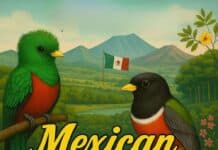
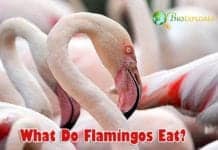
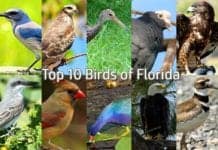













[…] the only endemic animals, with each island having their own native species and many that overlap. Some of the more notable species are the Hawaiian Creeper, the Nene goose, the I’iwi, and even […]